
Eggcellent Adventures in Classroom Embryology is about learning through experience. In most cases, when a teacher signs up to teach chicken embryology in the classroom, the teacher sets up the incubator and the teacher and class wait for the eggs to hatch. That is the experience. But the daily plan of lessons in this guide make the chicken embryology experience an intracurricular experience. Through a series of activities, students can see firsthand how a chicken develops in an egg. Students will candle eggs to observe chick development, record data, make predictions, and conclude what they think the final outcome will be. The lessons in the guide follow Florida Sunshine State Standards and each contains an experience, instructions, background information, and reflection questions. The 31 lessons address math, language arts, and visual arts in addition to agricultural literacy and science concepts. Written by Shaina Bennett and Judy Levings and published by the 4-H Youth Development Program, October 2015.
http://edis.ifas.ufl.edu/4h368
Tag: Judy Levings
Getting Started in the 4-H Embryology Project: Tips for 4-H Agents and Teachers
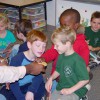 Usually considered an enrichment project for classrooms, the 4-H Embryology Project can also be modified for club or individual use. In it, young people use an incubator to grow avian embryos (inside fertile eggs) through the hatching process. Students learn basic biology and life science while they eagerly look forward to hatching chicks. This 5-page fact sheet describes the necessary equipment and other resources and provides tips and suggestions to increase the hatchability of fertile avian eggs. Written by Marcus Boston, Chris Decubellis, and Judith Levings, and published by the UF Department of 4-H Youth Development, April 2015. (Photo: Marcus Boston, UF/IFAS)
Usually considered an enrichment project for classrooms, the 4-H Embryology Project can also be modified for club or individual use. In it, young people use an incubator to grow avian embryos (inside fertile eggs) through the hatching process. Students learn basic biology and life science while they eagerly look forward to hatching chicks. This 5-page fact sheet describes the necessary equipment and other resources and provides tips and suggestions to increase the hatchability of fertile avian eggs. Written by Marcus Boston, Chris Decubellis, and Judith Levings, and published by the UF Department of 4-H Youth Development, April 2015. (Photo: Marcus Boston, UF/IFAS)
http://edis.ifas.ufl.edu/4h367
Florida 4-H Officer's Handbook
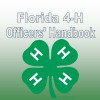 The duties and responsibilities of each of the club officer roles are outlined in this helpful guide. It also includes a 4-H club meeting checklist and information about club performance recognition. This 12-page fact sheet was written by Judith Levings, Ali Baker, Sarah Hensley, Stacey Ellison, and published by the UF Department of 4-H Youth Development, September 2014.
The duties and responsibilities of each of the club officer roles are outlined in this helpful guide. It also includes a 4-H club meeting checklist and information about club performance recognition. This 12-page fact sheet was written by Judith Levings, Ali Baker, Sarah Hensley, Stacey Ellison, and published by the UF Department of 4-H Youth Development, September 2014.
http://edis.ifas.ufl.edu/4h049
Florida 4-H Treasurer's Manual and Record Book
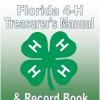 Being the treasurer is a very important position in your club. Your fellow 4-H Club Members have shown their confidence in you by letting you have this responsibility. As treasurer, you will be responsible for taking care of the club’s money, bank accounts, or other money matters. This 32-page manual and record book has been updated by Judith Levings, Sarah Hensley, and Stacey Ellison, and published by the UF Department of 4-H Youth Development, September 2014.
Being the treasurer is a very important position in your club. Your fellow 4-H Club Members have shown their confidence in you by letting you have this responsibility. As treasurer, you will be responsible for taking care of the club’s money, bank accounts, or other money matters. This 32-page manual and record book has been updated by Judith Levings, Sarah Hensley, and Stacey Ellison, and published by the UF Department of 4-H Youth Development, September 2014.
http://edis.ifas.ufl.edu/4h012
4-H Project Learning
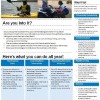 A project is a planned series of learning experiences of six hours or more within a particular area of youth interest (Florida 4-H definition). The purpose of a 4-H project is to promote mastery of subject matter and to foster life skill development. This 4-page fact sheet was written by Judith Levings, and published by the UF Department of 4-H Youth Development, August 2014.
A project is a planned series of learning experiences of six hours or more within a particular area of youth interest (Florida 4-H definition). The purpose of a 4-H project is to promote mastery of subject matter and to foster life skill development. This 4-page fact sheet was written by Judith Levings, and published by the UF Department of 4-H Youth Development, August 2014.
http://edis.ifas.ufl.edu/4h343
Making Learning Fun
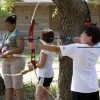 As a 4-H volunteer, one of your most important roles is helping youth learn. Especially because membership in 4-H is voluntary, learning in 4-H must be fun. Even if you’re not a teacher by profession, you can successfully guide youth to learn communication, leadership, citizenship, and other life skills, as well as subject matter through their 4-H projects and club participation. This 5-page fact sheet was written by Keith G. Diem and Judy Levings, and published by the UF Department of 4-H Youth Development, July 2014.
As a 4-H volunteer, one of your most important roles is helping youth learn. Especially because membership in 4-H is voluntary, learning in 4-H must be fun. Even if you’re not a teacher by profession, you can successfully guide youth to learn communication, leadership, citizenship, and other life skills, as well as subject matter through their 4-H projects and club participation. This 5-page fact sheet was written by Keith G. Diem and Judy Levings, and published by the UF Department of 4-H Youth Development, July 2014.
http://edis.ifas.ufl.edu/4h340
Adopting 4-H Club Bylaws
 Why does a 4-H club (for youth ages 8–18) need bylaws? For the same reason our country needs a constitution! By having fair and written rules, the rights of all members can be protected. The following is a suggested format for 4-H bylaws. The bylaws below may be adapted to meet local conditions. Be sure to send a copy of your club’s approved bylaws to your county 4-H office. Include in the bylaws the date when they were approved and most recently revised.This 3-page fact sheet was written by Keith G. Diem, Judy Levings, and Ben Knowles, and published by the UF Department of 4-H Youth Development, July 2014.
Why does a 4-H club (for youth ages 8–18) need bylaws? For the same reason our country needs a constitution! By having fair and written rules, the rights of all members can be protected. The following is a suggested format for 4-H bylaws. The bylaws below may be adapted to meet local conditions. Be sure to send a copy of your club’s approved bylaws to your county 4-H office. Include in the bylaws the date when they were approved and most recently revised.This 3-page fact sheet was written by Keith G. Diem, Judy Levings, and Ben Knowles, and published by the UF Department of 4-H Youth Development, July 2014.
http://edis.ifas.ufl.edu/4h338